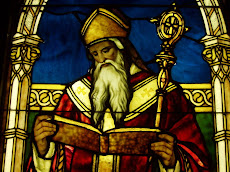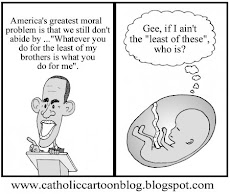The Archbishops of Canterbury and York jointly proposed an amendment that would have created breathing space for dissenters but it was defeated. Interestingly, it passed both the House of Bishops and the House of the Laity but failed in the House of the Clergy by a mere five votes. Thus, the women clergy were able to make the difference in preventing compromise and maintaining unity in the Church, choosing instead to ram the liberal agenda down the throats of the Evangelicals and Catholics.
I remember back in the late 1970s when the issue of woman's ordination was being debated in our Baptist denomination in the Atlantic Provinces that it was said that it was woman's ordination today and homosexual ordination tomorrow. It seemed absurd and most of us laughed off any connection. I am not laughing any more.
In denominations in which many women were ordained it appears that, although a minority are orthodox and Evangelical, the majority are liberal in theology. Thus the overall effect has been to make the denomination more liberal. Accompanying the ordination of women is the ideology that there must be equal gender representation on all committees, which means that the smaller, more liberal pool of females is over-represented. Those wondering how confessional denominations could shift to wild-eyed heresy in such a short period of time need look no further than this political reality for an explanation.
It now seems to me that the Church of England, having basically invited the Evangelicals and Anglo-Catholics to submit or get lost, is absolutely certain to go the way of the Episcopal Church in the US. Homosexual ordination and homosexual bishops are on the way now and it is only a matter of time. A weak, vacillating and theologically vague Archbishop of Canterbury cannot stem the tide or rally the faithful. Everything is politics and compromise for him; nothing is theologically non-negotiable. His most important doctrine is institutional unity above all - even theological truth.
Virtue sums up the future of the Church of England in a sad but probably accurate paragraph near the end of his article:
Likely scenario in 20 years' timeRead the whole article here.
The Church of England will be very largely a homogeneous liberal body, like the Church of Sweden. It will have about 250,000 active members. The hierarchy will still be intact, but at the local level there will be many closed churches, and many more struggling to remain open. There will be no significant growth points, once Evangelicals and Catholics are gone. Former Anglo-Catholics will by now have been fully absorbed into the Roman Catholic Church with little trace remaining. There will be a number of large Evangelical churches around the country, but no longer in communion with the Church of England - congregational churches in all but name, with occasional visits from overseas prelates, in the tiny rump of the Anglican Communion that will have survived by 2030 - all those provinces which currently ordain women will have gone the same way as the Church of England.
The Church of England will have lost its identity. Church properties will be sold off just to pay the bills with disestablishment a real possibility. Prince Charles, now King, will be the "Defender of Faiths." He has already said he wants to be crowned King in a multi-faith coronation.
At that point, Global South leaders who represent more than 80% of the Anglican Communion might well ask themselves if the historical attachment to Canterbury is worth the paper it is printed on.
Once the Anglican Communion represented a via media between Roe and Protestantism and seemed to have an historic mission as a bridge to ecumenical unity. That mission now lies in taters because of intolerant, politicized, theological liberalism and it determination to accommodate the Church to the world instead of standing firm for the Gospel. This is unspeakably sad, but thankfully we know that the true Church cannot be destroyed by anything that happens on earth and that Jesus Christ reigns forever.





No comments:
Post a Comment